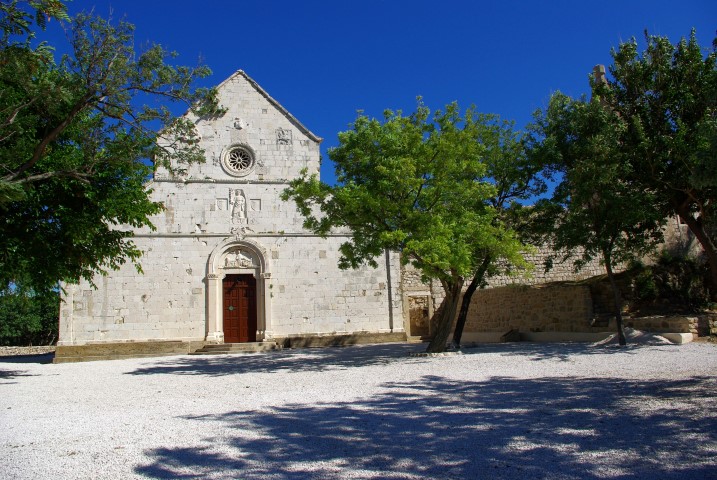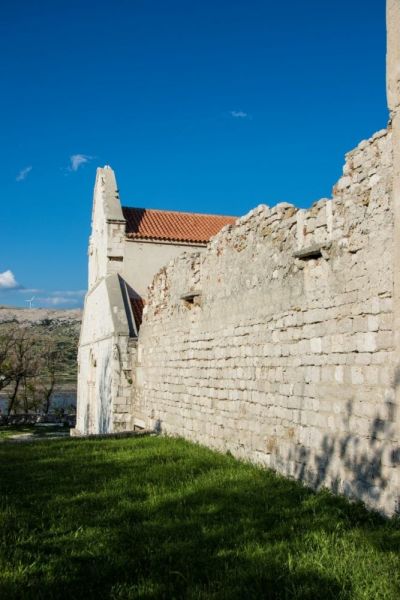
Pag’s Old Town is located a kilometre south of today’s town core. What used to be a large and rich town is today is an archaeological site and shrine. The Romanesque Church of St. Mary with a statue of the Mother of God has been preserved along with the remains of a Franciscan monastery. Pag’s residents maintain the tradition of pilgrimages from the Old Town to “new” Pag on the Feast of the Assumption of Mary into Heaven, carrying a statue of the Blessed Virgin Mary. The votive procession first began in 1855. A cholera epidemic hit Pag in 1852 and raged in intervals and, to prevent contagion, all graves were relocated from the town and its churches. On the Feast of the Assumption in 1855, the people of Pag gathered spontaneously in the Old Town, around Mary’s statue, praying for salvation from the cruel disease. They carried the statue to Pag’s parish church. The last cholera victims were buried on 16 August of the same year, the Feast of St. Roch. It was then that the people of Pag vowed to bring Mary’s statue to Pag every year and put it on display in the Church for 22 days, until the Nativity of Mary, enabling the congregation to thank her and pray for salvation, health, peace, and love.
There is a well with drinking water in the monastery’s courtyard. According to legend, during a season of terrible drought, Pag’s denizens prayed for salvation to the Holy Mother. One morning, after long prayers, the monastery’s well was filled with water which saved the people of Pag from drought.











